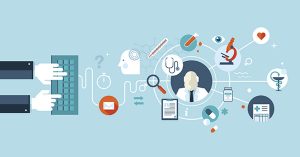With technology taking over the medical industry at an unstoppable rate, some researchers are beginning to examine the long-term implications for professionals having to utilize software to access hospital data. A newly published study in the Journal of the American Medical Informatics Association has speculated that electronic health record (EHR) usability is directly correlated with burnout rates among medical professionals and that national usability scores leave something to be desired.
This study was composed of researchers from the Mayo Clinic, the Yale School of Medicine, the University of Virginia School of Nursing, the American Nurses Foundation, and the Stanford School of Medicine. They examined data from a survey conducted in 2017 which received responses from 1,285 nurses. The survey was the first one of its kind to measure perception of EHR-usability nationally from the perspective of nurses. Using the System Usability Scale, a respected standard of measurement in the field, researchers determined that the national score for usability was 57.6—a failing grade.
The rate of burnout was measured by the Maslach Burnout Inventory, which examines factors like emotional exhaustion, depersonalization, and sense of personal accomplishment. In an alarming result, 42% of all respondents exhibited signs of being burned out. With nurses making up a large percentage of medical professionals utilizing these systems, it is a glimpse into a problem that is dominating the industry.
Many hospitals are beginning to implement new software as a means of managing patient records, insurance information, prescriptions, and payments. Oftentimes these changes are coupled with a lack of resourcing or education on how to operate these interfaces. In other cases, software companies may be out of touch with the day-to-day intricacies of hospital workflow when developing the technology, falling short on versatility or ease-of-access.
Ultimately, the solutions for EHR-related burnout comprise the combined efforts of software developers and medical professionals alike. In the creation of these programs, it is the duty of the developer to create accessibility, whether through the outline of their programming or through the utilization of machine learning and AI, which can help users navigate through data. In practice, hospitals and practitioner offices should implement thorough training in the newly implemented technology and provide a professional resource for assisting employees with potential problems.























